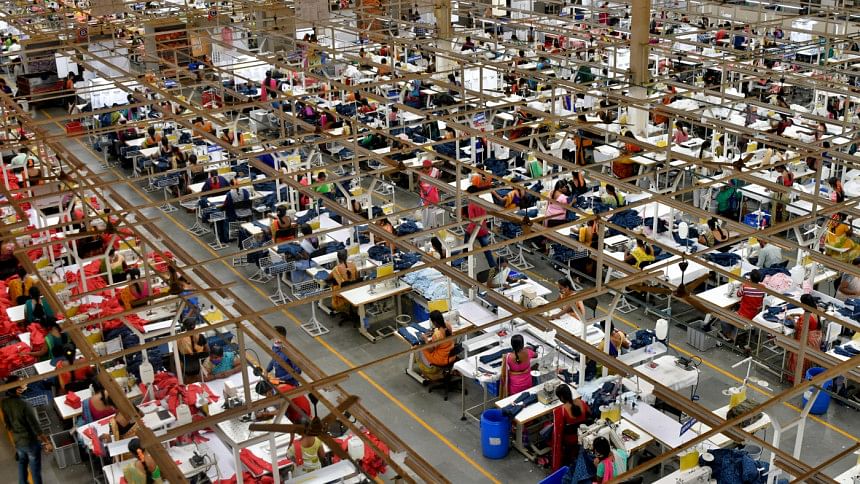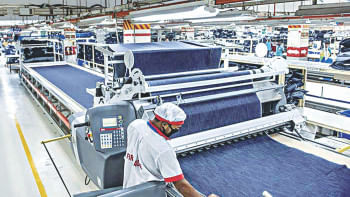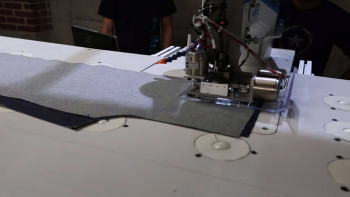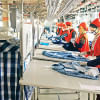Automation’s role in RMG production remains uncertain

The spectre of automation has hung over Bangladesh's garment industry for as long as I have been a factory owner. Now and then, we hear talk that automation will soon become mainstream within the industry, and that the lack of automation is holding our industry back and preventing it from fulfilling its potential. There are also those who argue that automation could help to increase our (historically low) productivity levels.
There is no doubt that automation can be both a threat and an opportunity for our garment industry and its workers, depending on how it is implemented and managed. There are several points to consider in this context.
First is the issue of job displacement. Most commentators agree that automation has the potential to replace certain tasks and jobs traditionally performed by garment workers. Machines and robots can handle repetitive and labour-intensive tasks more efficiently and at a lower cost than garment workers – in theory anyway. This could lead to a decrease in the demand for human labour in some areas of garment production, although I have not seen such occurrences of this yet in Bangladesh's garment sector.
Skill requirements are another issue. As automation advances, the demand for higher-skilled workers may increase. While some low-skilled jobs could be lost to automation, there may be a growing need for workers with technical skills to operate and maintain automated systems in garment factories.
Some people believe this shift could create a divide between workers with relevant skills and those without, potentially exacerbating income inequality. While I am not so sure this would be the case, the issue of skills does highlight that, with greater automation, we need to see more investment in skills and training. Are our universities and technical colleges geared up to offer these skills? Is this something they need to be planning for?
Working conditions will also potentially be impacted by automation. Automation can help improve working conditions for garment workers but, as always, there are caveats to this. Dangerous and physically demanding tasks could be automated, reducing the risk of workplace injuries and health issues. This could lead to safer and more comfortable working environments.
As mentioned previously, automation can enhance the efficiency and productivity of garment manufacture. Automated machines could work faster and more accurately, resulting in higher output levels and shorter production cycles. This can potentially lead to increased profitability for businesses, which could, in turn, benefit workers through higher wages and better job security. Again, however, none of this is guaranteed. The best route to profitability as I see it remains higher-value, niche products. Would automation facilitate this?
What about the case of Bangladesh, which is still a developing country? We have to remember that garment production is a significant source of employment in Bangladesh, like in many developing countries. Many are concerned that automation may lead to job losses in Bangladesh's garment sector. These are concerns I myself share. Yet others argue that automation could lead to increased competitiveness and technological advancement. Developing countries that adapt and invest in automation technology could attract higher-value production and attain a competitive edge in the global market.
To a certain extent, we have seen this story play out in other industrial sectors, although not so much in garment production. China has become a global leader in automation, particularly in technology sectors. This has enabled the country to gain huge competitive advantages in dozens of industry sectors, helping to raise wages and living standards across the board.
At the same time, it has become clear that automation in garment manufacturing has not taken off to the degree that many were once anticipating. There was lots of talk of "sewbots" for a while in our industry, and at global conferences I attended. But such discussion has since died down. Could it be that handling fabrics and the like is simply too intricate a task for robots? Have we already reached the limits of automation for garment production in terms of technical possibilities? Are financial constraints the issue? Or are closed minds and an unwillingness to embrace new ideas and technologies holding us back?
My hunch is that it is a little of all of the above. However, the significant factor to consider is wages. Bangladesh is a low-wage economy and garment manufacturing is a very low-wage industry. But if wages were eating more significantly into businesses' cost bases, could it be that there would be a greater sense of urgency to introduce automation?
It could be fruitful to observe automation take off in higher-wage garment production countries in Europe as well as China and Vietnam in Asia. These countries could act as a testbed for what is or is not possible with automated garment production and give us a glimpse into the limits of new technologies. That might be a positive for Bangladesh at present, when job insecurity is already high due to the global economic slowdown.
Lastly, the financial payback on automation is around five years in Bangladesh (in comparison to around 1.5 years in China), and this is likely one of the reasons why Bangladeshi factory owners have been slow to adapt. But if automation is definitely coming at some point, why not be an early adopter to gain an edge over competitors besides China?
Mostafiz Uddin is the managing director of Denim Expert Limited. He is also the founder and CEO of Bangladesh Denim Expo and Bangladesh Apparel Exchange (BAE).

 For all latest news, follow The Daily Star's Google News channel.
For all latest news, follow The Daily Star's Google News channel. 










Comments